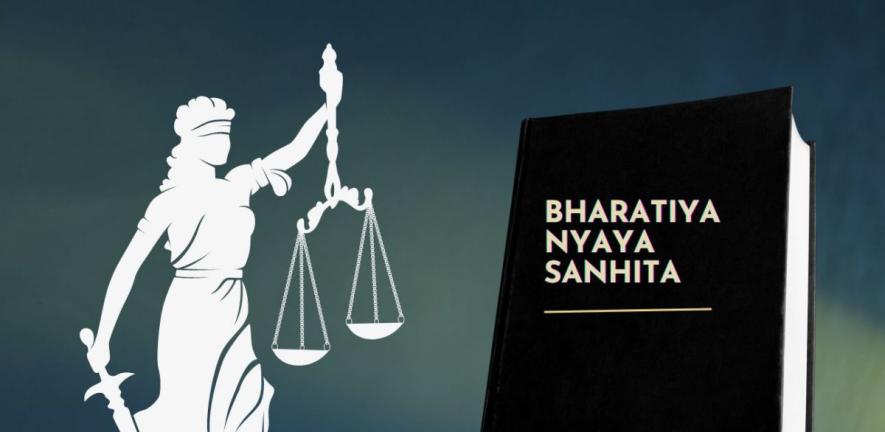BNS: The Convoluted Provision of Attempted Suicide in Law

Image Credit: The Leaflet
In the British colonial territories, laws were often used as tools of experimentation, with colonial territories serving as the testing ground. The legal frameworks were not just about governance but were designed to enforce strict obedience while modernising the British criminal justice system while it lacked coherence and most of the criminal acts were penalised by death in the United Kingdom.
The roots of the criminalisation of suicide go back to the feudal age in the reign of King Edgar of England in 967 CE, when individuals were regarded as the property of their masters’ and committed suicide as an act of forfeiture – a betrayal of ownership and control. The colonisers relayed the archaic formulation of law to their territories which remained entrenched in the penal statute of most of the colonies.
Despite the passage of time, several erstwhile colonies had preserved the relic of the colonial past. India, till recently, was one of them, though it had not detached from the colonial past bearing in mind the provision of attempted suicide has been morphed into a tool to cull dissent now.
In 2018, the Mental Healthcare Act of 2017 had provisioned that one shall be ‘presumed under severe stress and shall not be punished under the law unless proved otherwise’ which meant facing a trial at the end.
The recently introduced Bhartiya Nyaya Samhita (BNS) on the face of the record has decriminalised attempted suicide in Section 309 of the erstwhile Indian Penal Code but has introduced a rather lethal provision under Section 226 of BNS i.e., ‘attempt to commit suicide to compel or restrain any public servant from discharging his official duty’.
The interpretation of the law has been unfounded upon judicial scrutiny in several instances, especially in cases of protestors resorting to indefinite hunger strikes. By explicitly codifying this measure, the law seems poised to target those who employ hunger strikes – a powerful and non-violent, potentially stifling dissent against the ruling dispensation. This becomes even more draconian and ambiguous, since suicide is neither defined in the penal statute nor the Mental Healthcare Act.
For instance, in 1961, Ram Sunder Dubey vs State, the Allahabad High Court had set aside the conviction of the petitioner who was on a hunger strike for three days. However, the court delved into the factual matrix of the case. Similarly, Irom Sharmila fasting against the AFSPA or Armed Forces (Special Power) Act, 1958, was charged and arrested multiple times for attempted suicide for continuing her indefinite hunger strike.
In 2021, the Madras High Court quashed a criminal complaint emanating from a hunger strike at the Special Camp, Poonamallee. The court was of the firm view that a hunger strike protest does not attract the offence under Section 309 but did not delve into the legality of the provision in consonance with a hunger strike. The newly introduced provision under Section 226 BNS affirms the criminalisation of the protest.
Given the new laws were drafted with the intent to decolonise, indefinite hunger strike was not criminalised even by the colonisers. The strategy of resistance was adopted by anti-colonial nationalists in the political spectrum from ahimsavadi (non-violent) M.K Gandhi to revolutionary figures, such as Jatin Das and Bhagat Singh. It is rather disturbing that the provision of attempted suicide has been twisted to criminalise the protest of an indefinite hunger strike wherein the citizenry has a fundamental right to protest peacefully.
Before this several recommendations, including the Law Commission report of 1971, and an Amendment Bill i.e., the Penal Code (Amendment) Bill of 1978 passed by the Rajya Sabha ostensibly reflected the intention of the legislature to repeal the provision but lapsed after the dissolution of the Lok Sabha in 1978. Even the Judiciary in 1996 in P Rathinam vs. Union of India had held the provision violative of Article 21 of the Constitution.
The omission of the provision criminalising attempted suicide undoubtedly marks a significant legal shift. The apex court in Harish Rana vs Union of India, while issuing notice to the stakeholders, seeks a ‘humane solution beyond euthanasia’. The factual matrix unfolds the tragedy of a young man in a Persistent Vegetative State (PVS) who sustains life without external aid. The substantive removal of Section 309 IPC could be an aid in legalising active euthanasia.
The apex court in the Gian Kaur case and the Aruna Shanbaug case had analysed and reiterated that active euthanasia could be made lawful only by the legislature. Now the law which has been an impediment has been omitted the apex court need not rely on the legislature to draw a cogent interpretation.
In adjudicating this case, the decision must not be influenced by religious doctrines or the verbatim romanticising life, as these perspectives can potentially cause prejudice. Since human life is a part of the material reality which comes with the right of bodily autonomy and self-expression. Ultimately, the capacity to romanticise life belongs to those who can endure it and not those who are burdened by suffering relentlessly and longs for release. Alas, the focus is toward a humane society with individual rights and dignity.
To conclude, the omission of Section 309 IPC and insertion of Section 226 BNS brings a dynamic shift in the rhetoric of legality. However, the shift is marred by the convoluted reintroduction of draconian measures through Section 226 BNS, which reasserts the oppressive provision under the guise which had been long called for repeal.
The writers are legal practitioners based in Delhi. The views are personal.
Get the latest reports & analysis with people's perspective on Protests, movements & deep analytical videos, discussions of the current affairs in your Telegram app. Subscribe to NewsClick's Telegram channel & get Real-Time updates on stories, as they get published on our website.






















